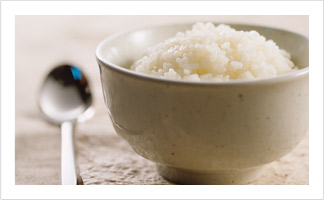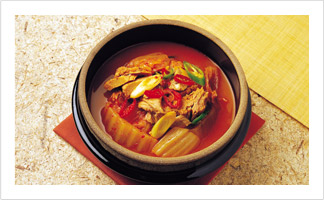
 > Guide for International Student > Life in Korea > Food and Restaurant
> Guide for International Student > Life in Korea > Food and Restaurant

As of August 2016, 1 USD is approximately 1,200 won(KRW), 100 JYP is 1,050 won, 1 EUR is 1,280 won and 1 CNY is 180 won. Please check with bank for exact currency rate.
Korean cuisine is naturally low in fat and high in fiber. Many special dishes incorporate herbal and medicinal ingredients that are beneficial to your health.
Once you find yourself in a Korean restaurant, don’t be afraid to share your food with friends. The bowl of stew in the middle of the table and side dishes are shared with everyone around the table. Through this culinary adventure, you will enjoy the full blend of flavors, but you will be also able to fully experience the Korean community.
Koreans use spoons and chopsticks for eating meals. The spoon is used for rice, soup, stews and any other juice or liquid in the dishes, while chopsticks are used for all sorts of side dishes and most solid foods. Chopsticks are used in many Asian countries but the shapes and materials differ from one country to another. The Chinese mostly use long chopsticks made of bamboo while the Japanese use shorter and thinner wooden chopsticks. Koreans, on the other hand, use metal or silver chopsticks of medium length.
A. Cooked Rice (bap, 밥)
Rice is the foundation of a Korean meal. In Korea, the expression eating rice(밥) means having a meal. Bap(밥) refers to cooked rice; there is a separate word for uncooked rice(쌀). Koreans enjoy several varieties of cooked rice, such as rice cooked with barley, beans, red beans, millet and other grains.
B. Soups (guk or tang, 국 또는 탕)
Soups incorporate a wide variety of ingredients, such as vegetables, fish, seafood and meats. Soup served with rice is the basis of the Korean meal. The soup and rice are usually separate, but some thick meat soups are served with the rice in them. In Korean, soups are called guk(국) or tang(탕). The names of Korean soups vary according to the main ingredients used (meat, vegetable, fish, etc.) and the seasoning for the broth (soy sauce, red chili pepper paste, soybean paste, and etc.).
C.Stews (jjigae, 찌개)
Korean stews resemble thick soups with meat, vegetables, or seafood and are seasoned with soy sauce, soybean paste (doenjang, 된장), red chili pepper paste(고추장), or pickled shrimp sauce. A bowl of stew or soup, accompanied by a bowl of rice, is the basis saucevery Korean meal. Unlike soups, a wide variety of ingredients are usually added to a stew. The a stcommon of ricre kimchi of , soybean paste (doenjang) stew and spicy soft tofu (soondubu, 손두부) stew.


Bulgogi(불고기), Bibimbab(비빔밥), Samgyetang(삼계탕), Japchae(잡채), Samgyopsal(삼겹살), Galbi(갈비), Soondubu Jjigae(순두부 찌개) are some of the most popular Korean dishes among internationals.
Heap and delicious meals are available in many kinds of restaurants near CNU, especially in the Gung-dong(궁동) area. You can also enjoy cold beer or Korean traditional drinks with friends in the pubs. * Note: Gung-dong is the name of district located in the east of campus. It is known as the most famous district for collegians and young people in Daejeon where you will encounter a variety of inexpensive restaurants, coffee shops, pubs, stores, etc. ( Direction: Follow street between Jeongsimhwa International Cultural Center and College of Engineering II, then you will see a small entrance (East Side Gate). Go through the entrance and turn left on the first block.)
In general, Koreans drink tab water boiled with roasted barley or corn. But it is considered safe to drink tab water without boiling after letting it sit for a day. Or you can conveniently purchase spring water at supermarkets, convenient stores, department stores and big shopping malls. Water in all restaurants is offered at free of charge.